 The 2019 general election was one of the most keenly watched general elections in the parliamentary history of India. On face of it till the last stage of polling, it looked like an equal contest between the ruling NDA and one or the other opposition party or alliance across the country with a few exceptions. But on May 23, when the results were out, it was actually one sided. And this suggested an entirely different scenario for the 2019 general election- the electorates were not vocal in this election, but while casting their vote they were quite clear whom they want to vote and it was the BJP and the NDA for majority of the voters. Such decisive support for the BJP and the NDA with not much clue during the entire election process, further suggests that there was a strong undercurrent in support of the incumbent Narendra Modi government. In fact it was so strong that in this election many political calculations went wrong, long time assumptions got broken, caste equations and religion based alignments failed, long time family bastions of some prominent leaders got washed away.
The 2019 general election was one of the most keenly watched general elections in the parliamentary history of India. On face of it till the last stage of polling, it looked like an equal contest between the ruling NDA and one or the other opposition party or alliance across the country with a few exceptions. But on May 23, when the results were out, it was actually one sided. And this suggested an entirely different scenario for the 2019 general election- the electorates were not vocal in this election, but while casting their vote they were quite clear whom they want to vote and it was the BJP and the NDA for majority of the voters. Such decisive support for the BJP and the NDA with not much clue during the entire election process, further suggests that there was a strong undercurrent in support of the incumbent Narendra Modi government. In fact it was so strong that in this election many political calculations went wrong, long time assumptions got broken, caste equations and religion based alignments failed, long time family bastions of some prominent leaders got washed away.
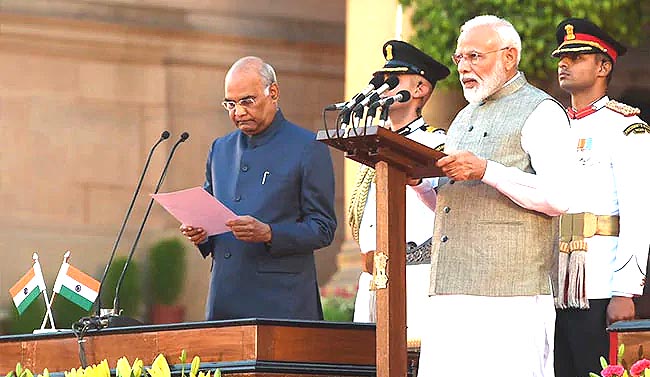 There has been similar and even bigger mandates for political parties and alliances in the past, but probably for the first time in the 2019 general election, the momentum of the support was not visible till the end of the election. Such silent decisive support was never witnessed in any of the previously held general elections.
There has been similar and even bigger mandates for political parties and alliances in the past, but probably for the first time in the 2019 general election, the momentum of the support was not visible till the end of the election. Such silent decisive support was never witnessed in any of the previously held general elections.
So, what was the reason for such intense undercurrent, which broke the long time proven equations and assumptions of the politics of this country?
In general if you talk about the 2019 general election results, everyone will agree that there was an undercurrent, and many will attribute one or more of the following for this undercurrent - the Balakot Air Strike, Religion based alignment, 10% Reservation for poor general class people, one or the other government schemes, personal attacks by the opposition leaders on Narendra Modi and division of the opposition votes. But while suggesting so, we miss to understand that undercurrents doesn’t build in a day or due to one or another incidence or decision, it takes much longer time and consistent efforts to build, gain momentum and stay sustainable. Let’s be holistic while analyzing this and look at the larger picture and try to see how this undercurrent was built over last 5 years and shaped the 2019 general election.
A strong India
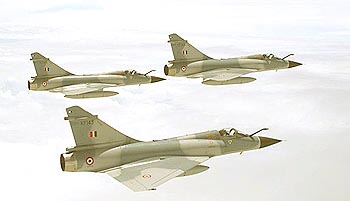 On February 26, 2019, just a little before the general election, the Indian armed forces executed successful air strikes on the terrorist camps in Balakot, Pakistan to avenge the terrorist attack in Pulwama. It brought a political storm in the country, whole of the opposition started seeing it from the domestic political angle in the context of the upcoming general election, many opposition leaders went to the extent to question the authenticity of the operation. But for the voters, it had just reinforced the idea of a strong India which Narendra Modi government had been building since it came into power in May 2014. Unlike the opposition parties, the voters were convinced with the idea of strong India because the Balakot air strike was not just a single isolated incidence, it was just another action by Indiaas per the changed policy in the new regime - hit back hard whenever there is a terrorist attack on the Indian soil.
On February 26, 2019, just a little before the general election, the Indian armed forces executed successful air strikes on the terrorist camps in Balakot, Pakistan to avenge the terrorist attack in Pulwama. It brought a political storm in the country, whole of the opposition started seeing it from the domestic political angle in the context of the upcoming general election, many opposition leaders went to the extent to question the authenticity of the operation. But for the voters, it had just reinforced the idea of a strong India which Narendra Modi government had been building since it came into power in May 2014. Unlike the opposition parties, the voters were convinced with the idea of strong India because the Balakot air strike was not just a single isolated incidence, it was just another action by Indiaas per the changed policy in the new regime - hit back hard whenever there is a terrorist attack on the Indian soil.
It started with the first terror incidence after Narendra Modi government took charge in Delhi. On June 4, 2015, there was a terrorist attack on an army convoy in Manipur. In just 6 days, on June 10, 2015, Indian armed forces for the first time after 1971 India Pakistan war, crossed the border and executed an insurgency operation in Myanmar.
In June 2017, when there was a conflict in Doklam between India and China, the Indian forces dealt firmly with the Chinese forces at ground and the government of India handled the issue with proper diplomacy. The message was clear to the world that it’s a new strong India which won’t bow to any illegitimate pressure.
In September 2018, when there was a terrorist attack on an army camp in Uri by Pakistan based terrorists,Indian armed forces once again executed cross border operations and destroyed the launch pads across the LOC in POK and killed many terrorists. In February 2019, there was attack on a CRPF convoy in Pulwama, in which 40 CRPF personals had lost their life. India was quick to hit back hard, and this time well inside the Pakistan territory. An air strike was executedon the terrorist training centers in Balakot, Pakistan, in which as per government of India,the center was completely destroyed and 130-170 terrorists were killed. Later when Wing Commander Abhinandan Varthaman was captured by Pakistan, government of India displayed the high class of diplomacy and its increased international clout to get WC Abhinandan safely released in just 60 hours of his captivity. India made it possible even without doing any direct dialogue with the Pakistan.
India has witnessed several terrorist attacks on the armed forces and the civilians in last few decades, but for the first time during the Narendra Modi regime, India has avenged each and every attack. It has dealt any issue of conflict with other countries firmly and with high level of diplomacy. No doubt, India has increased its clout at the international level. This was a changed India, and in general the common man of the country acknowledged and applauded it.
Proud inclusive Hinduism
For the first time in the history of independent India, there was a prime minister who didn’t shy showing his devotion and believe in Hinduism and Hindu traditions, rather he always looked proud doing so. It’s a fact that all former Prime Ministers in India, in the name of secularism,had always kept their personal believe in Hinduism (Sikhism in case of Manmohan Singh)as a private affair, but they had publicly organized the iftar parties.Though there is nothing wrong in that, but it created a sense of minority appeasement among the majority Hindus, and in fact it had never helped the Muslims in any way. For the majority Hindus who was used to of this kind of politics, the proud public proclaim of his faith in Hinduism and Hindu traditions by Narendra Modi was a pleasant change. Hinduism as a religion was always led by the upper castes, Narendra Modi an OBC with a humble background, was the new “Hindu Hridya Samrat”, and it seems it was one of the major reasons for the larger non upper castes Hindus to feel more connected to the idea of political Hinduism.
A Government for the people
The Narendra Modi government in its first term in office had let every section of the society feel that this government was working to take care of their needs and aspirations.
For the aspiring middle class, the startup India, Mudra Yojna, better air, train, road connectivity, overall controlled price throughout the five years, easy loansand subsidy on home loans. For the entrepreneurs and the business class, Modi government has done serious business regulatory reforms, hundreds of redundant laws have been terminated to improve the ease of doing business.All the government bidding has been made online to ensure transparency.As per the World Bank ranking, India has improved its ranking form the 142nd rank in October 2014 to the 77th rank in October 2018. In September 2014, government launched the ambitious Make in Indiaproject with a goal to transform India into a global design and manufacturing hub. Though it didn’t gave the results as expected, the entrepreneurs in general believe that it’s an approach in the right direction and it may pick up in the years to come.
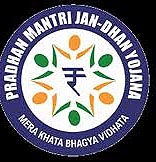 The Modi government had more focus on the poor in the rural areas, majority of whom belonged to the OBC, EBC, SC, ST and minority communities and who were in general not considered as BJP supporters.The Modi government launched several big ticket schemes for the betterment of the life of this section of the society. It’s not that the previous governments had not done anything,
The Modi government had more focus on the poor in the rural areas, majority of whom belonged to the OBC, EBC, SC, ST and minority communities and who were in general not considered as BJP supporters.The Modi government launched several big ticket schemes for the betterment of the life of this section of the society. It’s not that the previous governments had not done anything,
in fact there has been flagship MANERGA and Indira Aawas Yojna schemes launched by the Congress governments. But all such ambitious schemes even after being there for a very long time could not bring much difference. Why it was so? Remember the honest admission of late Prime Minister Rajiv Gandhi, that every rupee sent by the government reaches as 15 paisa to the needy. The Narendra Modi government first fixed this problem – it ensured that the 1 rupee which government spends for any schemes reaches as 1 rupee to the account of the beneficiary, mind it to the account not to the pocket.
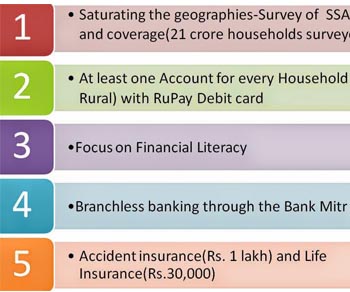
On August 15, 2014, the government launched the Pradhan Mantri Jan Dhan Yojna, the first major scheme of the Modi government,under which close to 32 Crore zero balance bank accounts have been opened for the poor people, and now any financial assistance or subsidiary is directly being credited to the beneficiary account.
Apart from Jan Dhan Yojna, the Narendra Modi government had launched several other schemes for the poor and the weaker section of the society. Let’s look at a few of these schemes which has really touched the life of the common man of this country.
Toilet for all - In his first Independence Day speech as Prime Minister, Narendra Modi had talked about the plight of the women in the rural areas who don’t have toilet at home.Not having a toilet at home was a real big pain for the women of the rural India, and majority of such women were from the comparatively weaker section of the society including the minorities, who have been traditionally not the BJP voters.Modi was able to gauge the gravity of this problem which was ignored even after six decades of getting independence. When Modi named the toilets “Izzatghar”, that explained, how well hehad understood this problem.
Under its flagship Swachh Bharat mission, the Modi governmenthad set the goal to ensure every household in the country must have a toilet by October 2, 2019, 150th birth anniversary of Mahatma Gandhi. For this government initiated a scheme to provide a financial assistance of Rs 15,000 to build a household toilet, and the amount is directly credited to the beneficiary account. As per this scheme, government also provides funds for building toilets in schools, anganwadi centers and community toilets. As per government data, till Feb. 01, 2019, 9.2 crores household and public toilets have been created under this scheme. As per the government record, 5.5 lakh villages and 28 out of states and union territories have been open defection free.
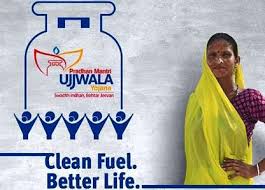 Prime Minister Ujjawala Yojna, a Modi government scheme launched on May 1, 2019 is to provide clean cooking facilities to women of poor families. By the time of 2019 general election, it had covered more than 700 districts and more than 7 Crore women had been provided free gas connection under this scheme. Majority of the beneficiaries were again from the weaker sections in the rural areas, and the women in general cutting across the caste, region and religion talked positively about this scheme.
Prime Minister Ujjawala Yojna, a Modi government scheme launched on May 1, 2019 is to provide clean cooking facilities to women of poor families. By the time of 2019 general election, it had covered more than 700 districts and more than 7 Crore women had been provided free gas connection under this scheme. Majority of the beneficiaries were again from the weaker sections in the rural areas, and the women in general cutting across the caste, region and religion talked positively about this scheme.
Sahaj Bijli Har Ghar Yojna and Ujala Scheme - A typical scene in a BPL house in a village 5 years ago – Either no electricity connection, or if it was there, the power supply on an average was not used to for more than 10 hours. And when the supply was there, it was used to be a dim yellow light of the electric bulbs in the house. Today, as per government data, there is electricity connection in 99.93% households, on an average in a day there is 15-20 hours electricity supply and there is bright light of LED bulbs, which isavailable at a subsidized rate. The LED bulbs reduces the overall bill as well, as it consumes less power. This has been possible due to the Sahaj Bijli Har Ghar and Ujala schemes of the union government for providing electricity to every household in the country and subsidized LED bulbs respectively.
Pradhan Mantri Aawas Yojna launched by the union government on June25, 2015, is aimed to ensure apukka house with basic amenities to all by 2022, when India will complete 75 years of its independence.This scheme is targeted for almost everyone who may need assistance. The scheme offers home loan with an interest subsidy of 3% to 6.5% to the EWS, LIG, MIG-1, and MIG-2, of 0-3 lakhs, 3-6 lakhs, 6-12 lakhs and 12-18 lakhs respectively. Apart from this, for the people belonging to the EWS (Extremely Week Section) of the society a direct financial assistance of 1.5 lakh is provided.As per government of India, during the period 2014-18, a total of 1.53 crore houses have been built under this scheme.
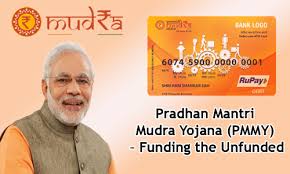 Pradhan Mantri Mudra Yojna was launched by the Modi government on April 8, 2015 for providing loan up to 10 lakh to the non-corporate, non-farm micro enterprises. As on March 2019, 17.68 crore Mudra loans have been sanctioned snice the launch of the scheme in April 2015. Such big number explains how much it has touched the life of the common man of this country.
Pradhan Mantri Mudra Yojna was launched by the Modi government on April 8, 2015 for providing loan up to 10 lakh to the non-corporate, non-farm micro enterprises. As on March 2019, 17.68 crore Mudra loans have been sanctioned snice the launch of the scheme in April 2015. Such big number explains how much it has touched the life of the common man of this country.
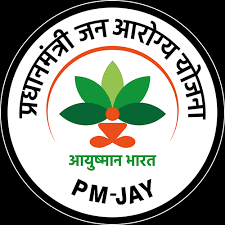 Ayushman Bharat Yojna is the ambitious scheme of the Modi government started in September 2018, under which it aims to provide health cover of Rs 5 lakhs every year to the poor in rural and urban areas. Till date, 3.74 Crore people have been enrolled for this scheme, more than 29 lakh beneficiaries have been admitted and more than 15 thousand hospitals have been empaneled to this scheme.
Ayushman Bharat Yojna is the ambitious scheme of the Modi government started in September 2018, under which it aims to provide health cover of Rs 5 lakhs every year to the poor in rural and urban areas. Till date, 3.74 Crore people have been enrolled for this scheme, more than 29 lakh beneficiaries have been admitted and more than 15 thousand hospitals have been empaneled to this scheme.
The vision of the Modi government for the poor of the country is to provide- a pukka house which has a toilet, electricity connection, subsidized LED lights, free gas stove and cylinder refilling, easy loan to start a small business, a free health insurance cover of 5 lakh every year, taking care of the expenses for the first child birth in the family and many other benefits under different schemes. And a zero balance account to ensure the financial assistance or subsidy for all different schemes reaches directly to the beneficiary. Overall everything needed to have a dignified life.In general, people in the rural areas expressedpositive views about these schemes, and as per the government data, there are crores of the BPL people who was have got benefitted with 3 to 5 or more of these schemes.
10% Reservation for the upper caste poor - Just three months before the 2019 general election, the union government presented and got passed the bill for 10% reservation for the upper caste poor in the parliament. By doing so, the BJP reaffirmed its most loyal supporters that it cares for them and it has the guts to stand for their rightful demands even if they are numerically a smaller voter segment compared to the OBCs and the EBCs.
Modi, Shah Duo
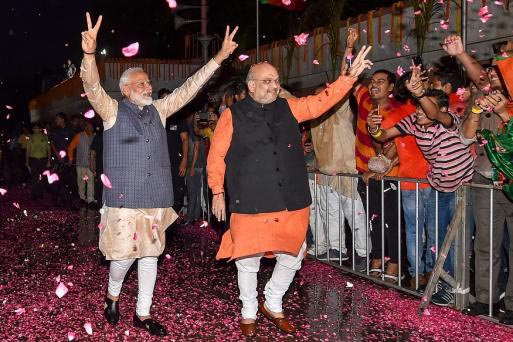
Under leadership of Narendra Modi and Amit Shah, the government and the party worked in complete sync in the five years of the party in the government. Narendra Modi government initiated several schemes for the benefit of the people across sections of the society, especially for the poor rural class which were traditionally not the supporters of the BJP. Whatever government did, the party took it to the people, it not only ensured that people be aware of such schemes but also ensured that the message goes out clear and loud that it’s the Narendra Modi government which is doing all this. The party ensured that a pro poor, pro farmer, pro rural image of the government builds up and continues to stay.
Chai Walah, Pradhan Sevak, Chowkidar
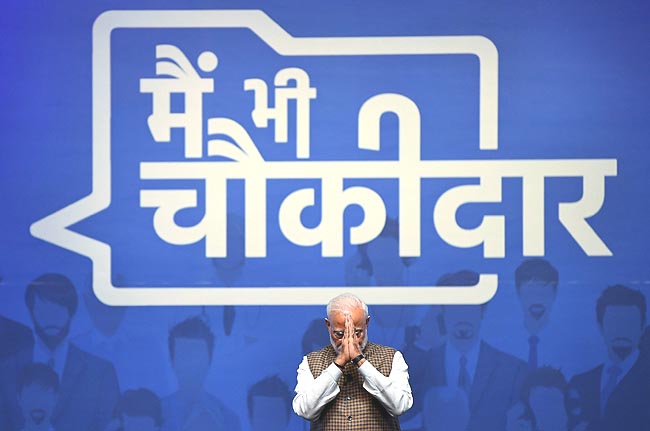
In 2014, when a senior Congress leader had said that Modi should better sell tea in AICC conference, he could never become PM. Modi had turned this statement as a pro dynast stand and as an abuseto the poor, weaker section of the society, and it had become a major poll issue in the 2014 general election. It had actually helped Modiconnect with the larger backward section of the society. Later after being elected, he said he is not the Pradhan Mantri but the Pradhan Sevak and is there to do seva (service) to the people of India. Further while attacking the previous Congress regime for the corruption charges, he said he is the “Chowkidar” and he will ensure not even a single paisa of the people of India gets looted. Some opposition leaders made joke of his statement and said that he is fit for the Chowkidar job only, and is unfit for the PM Job. Later, Rahul Gandhi coined the “Chowkidar Chor Hai” slogan and raised it in his every public meeting. To counter this, the BJP started “Main Bhi Chowkidar” campaign and that became one of the most successful and spontaneous political campaigns in recent years. This explained that the common man of this country didn’t like the personal attack on Narendra Modi. Overall with all such statements and counter statements in last 5 years, Narendra Modi had ensured that the common man of the country stayed connected with him.
Fragile Opposition
The opposition for the whole five years criticized each and every decision of the government. It opposed Narendra Modi government at every point inside and outside of the parliament. But, it’s a fact that none of the opposition parties or alliances couldpresent itself even at a single instance as an alternative, even to a distant far to the Narendra Modi led NDA. The opposition concentrated more on its agenda of “Modi Hatao” than the issues of public concern. Till the end of the election, it couldn’t convince the electorate why they should vote to oust Modi.Another point to be noted is that, even after talking of opposition unity for five years, it was not united. Every opposition party wanted to defeat the NDA, but everyone wanted the other opposition parties to sacrifice for this common goal. This continued till the end, and even those electorate who were not so happy with the incumbent Modi government did not find the opposition as a viable option.
To conclude, it was a strong undercurrent which helped Narendra Modi come back to power in 2019 with a larger mandate than in 2014. And this undercurrent was not built by chance, it was the result of the major policy changes and the continuous targeted efforts in sync by the Narendra Modi led government and Amit Shah led Bharatiya Janata Party. There was intense and honest efforts to uplift and empower life of the poor weaker section of the society, with more thrust to the rural areas, farmers and the women. The 2019 results, explains that many people from these sections of the society were convinced with the pro poor image of the governmentandrewarded the BJP in the election. The BJP not only retained its support in the urban constituencies, but also did extremely well in the rural areas. It has won several constituencies where it could had never won unless it would not had got votesfrom beyond its traditional support base. Another interesting data point from this electionis the higher voting percentage of the women voters, and the first time voters, and the result explains that the women were convinced with the approach of this government and the youth bought the idea of Narendra Modi of a strong developed India, and were convinced that he must get one more chance to take forward the initiatives he has taken and to fulfill the promises he has made to the nation.
*Rahul Vatsa is a political,social analyst from Bihar.
He can be reached at vatsa.rahul@gmail.com
